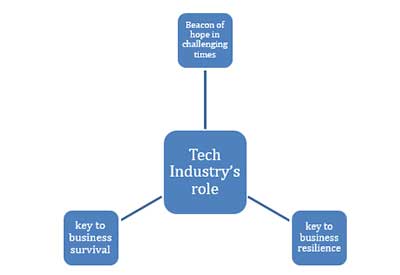Relevance: GS-2: Issues Relating to Development and Management of Social Sector/Services relating to Health, Education, Human Resources
Key Phrases: Knowledge Hub, Social Infrastructure, Skilling,Science, Technology and Innovation Policy 2020
Why in news?
- With the presentation of the Budget 2022-23, hopes for
expenditure on Social Infrastructure creation has arisen
- Social Infrastructure refers to type of infrastructure which helps in augmenting human resource
- It includes expenditure on skilling, education and health
What does it mean to be a knowledge hub?
- A country is said to be a knowledge hub when it is able to utilise the skill and knowledge of its people in order to better its standard of living. It requires concerted efforts of Government, Business and People to become a knowledge hub and economy
Key points from the article
- Financial Year 2022 is an important milestone in India’s history as we celebrate 75th anniversary of independence “Azaadi ka Amrit Mahotsav”.Milestones are a good time to pause and reflect on the journey, especially if they come amid a global pandemic
- Tech Industry’s importance has increased during COVID times
- Last year, the Indian information technology (IT) services industry grew by about 10% to Rs 14.21 lakh crore ($190 billion), outpacing the global growth of 3-4%
- As governments, businesses, and consumers rapidly adopt digital technologies, India is also emerging as one of the fastest growing digital economies in the world
- Priority sectors which need special attention for building India
into a knowledge hub
- Education
- Research and Development
- Tech Sector
Status quo and Challenges
- Universal Access to Quality Education
- India currently spends less than 3% of its GDP on education
- In order to utilise the demographic dividend, necessary
expenditure in the education sector is imperative.
- As per, United Nations Population Fund (UNFPA), demographic dividend means, "the economic growth potential that can result from shifts in a population’s age structure, mainly when the share of the working-age population (15 - 64 years) is larger than the non-working-age share of the population (<14 years, and >65 years)
- As per Economic Survey 2018-19, India’s Demographic Dividend will peak around 2041, when the share of working-age,i.e. 20-59 years, population is expected to hit 59%
- India has enabled access and recorded high enrolment of children in schools over 75 years, poor learning outcomes and inequities continue to haunt us
- 200 Mn school children has been out of school due to COVID related measures
- Invest in basic research
- India has gained from its early investment in science and technology
research in institutions like the Defence Research and Development
Organisation (DRDO) and the Indian Space Research Organisation (Isro),
and public and private universities.
- In the 1980s, when Wipro set up its research and development (R&D) unit, the company made several hires from public institutions
- India has been investing meagerly in Research & Development (R&D) in proportion to its GDP
- And this has remained constant over several decade
- The Indian private sector, meanwhile, has contributed more than 35% (36.8% in 2017-18) of the national R&D expenditure over the past few years
- India has gained from its early investment in science and technology
research in institutions like the Defence Research and Development
Organisation (DRDO) and the Indian Space Research Organisation (Isro),
and public and private universities.
- Tech Sector Spending
- Global spends on technology are set to double in the coming years and India is well placed to leverage it.
- But, we lack a concrete plan to utilise this

Way Forward
- Universal Access to Quality Education
- National Education Policy (NEP) 2020 pledges to increase the education expenditure to 6% of GDP
- Our ability to provide high-quality education to them will
determine the future of our country. Our children and young need a
solid fundamental education that encourages
- Problem-solving
- Inquiry-based learning in sciences, social sciences, and humanities
- The NEP represents India’s biggest reform of education. It covers the entire arc, from early childhood care to higher education, looks to develop real capacities, and envisions a transformation of all supporting structures, including regulation
- In her Budget speech on Tuesday, Nirmala Sitharaman also promised to establish a digital university for students across the country
- Invest in basic research
- With new Science, Technology and Innovation Policy 2020, one hopes the Centre will drive more research and innovation
- Tech Sector Spending
- There is a need to plan for the next 25 years. While much of the initiative will come from the industry, the government has a crucial complementary role to play to this end.
- Infrastructure of Cities
- Need to Improve infra and living conditions in smaller cities so IT can adopt more bases
- In her speech on Tuesday, Minister Sitharaman said, ‘…by the time of India@100, nearly half our population is likely to be living in urban areas. This would require us to re-imagine our cities into centres of sustainable living… We plan to steer a paradigm change.’
- We need to nurture megacities as current centres of economic growth, we need to prepare tier-2 and -3 cities to ‘take on the mantle in the future’. This will not only create new talent hubs but will also foster a more inclusive society
Conclusion
- India had pledged to become a knowledge economy through the Digital India program. With investment in Digital Infra, there is a need to invest in the aforementioned area to ensure India is ready for the new Digital age and is placed to capitalise on the opportunities it brings with it.
Source: The Economic Times
Mains Question
Q. What are the current challenges in the road to becoming a knowledge hub for India? Mention a suitable way forward. (10 marks)









